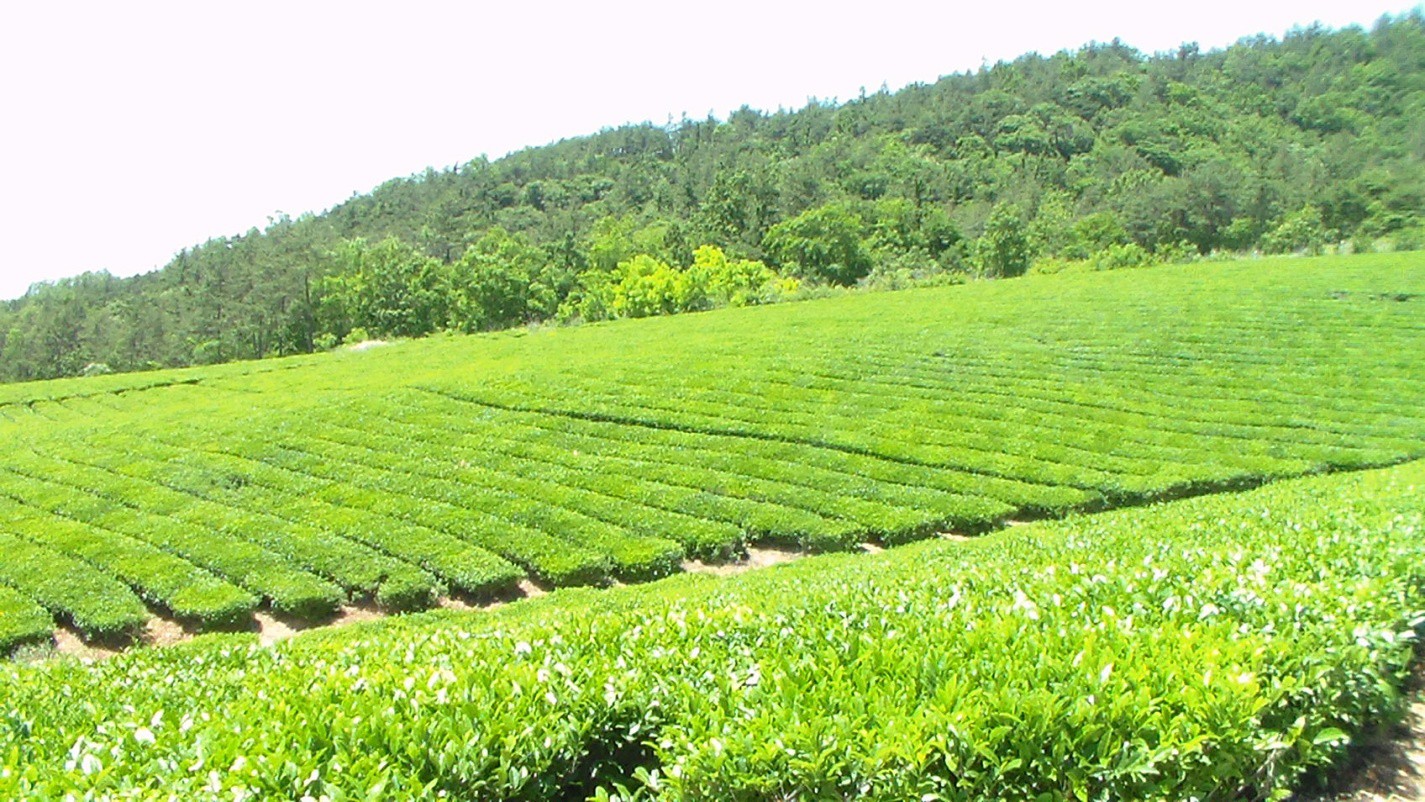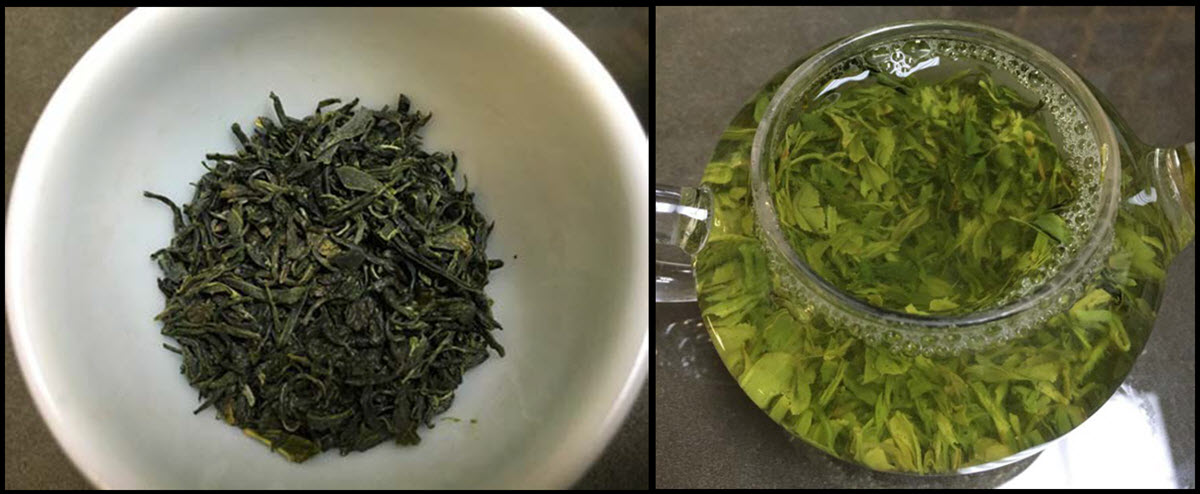Tea is grown in three main regions of South Korea: Jeolla-do (mainly south), Gyeongsang-do (mainly south), and Jeju-do, an island off the southern tip of the country.
In the peninsula, much of the tea grows near Jirisan, the largest mountainous national park in Korea located in the middle of Jeolla-do and Gyeongsangnam-do (South Gyeongsang). Though recent global climate changes have brought longer summers and winters, Korea experiences four distinct seasons with temperatures ranging from below-freezing, snowy winters to hot, humid monsoons in the summer. Tea fields are mainly found in the southern regions of the peninsula because winters in the northern regions fall to below freezing temperatures (too cold for tea). Also, the mountains and surrounding seas in the southern regions, along with rich soil conditions provide the ideal environment to produce the best teas.

To the west of Jirisan lies Jeollanam-do (South Jeolla). An area filled with a rich history and culture of tea and teaware, it is the perfect place to start learning about Korean tea. You can have some of the most delicious food in the country, hike Jirisan, visit one of many Buddhist temples (some offering “Templestay“), and visit some of the largest and most famous tea fields in Korea.
“The region benefits from being home to the Seomjingang River and the Yeongsangang River. Thanks to the two rivers, Jeollanam-do has plenty of water and fertile soil. Also, the Plains of Naju, about half way down the length of the Yeongsangang River, flowing in the northwestern part of the province, is home to the nation’s most fertile region, producing the largest amount of grain and food. Due to its location at relatively lower latitudes, Jeollanam-do is hot and humid in the summer and cold and dry in the winter. Across the southern regions of the country, the average temperature lingers at around 14 degrees Celsius, about two or three degrees higher than the rest of the peninsula.” (Lee, S. (2014, February 24). Food Tourism 6: South Jeolla Province. Retrieved May 13, 2016, from http://www.korea.net/NewsFocus/Travel/view?articleId=117709)

Within Jeollanam-do lies the town of Boseong, also known as the green tea capital of Korea. According to Wikipedia, almost a third of all tea farmland is located in Boseong and nearly half of all green tea production in Korea comes from the area.
Boseong is home to one of the nation’s oldest and largest tea plantation, Daehan Dawon, as well as close to 100 smaller local tea farmers that collectively sell under the name Boseong Tea. The annual Boseong Green Tea Festival, promoting the town’s famous green tea and celebrating the season’s first harvest, was held May 4–8, 2016.
In Korea, the small leaf variety (ideal for production of green tea and partially oxidized tea) of C. sinensis is grown. “Typically Korean tea plants grow to 2 to 3 meters (6 to 10 feet) and tea leaves are 4 to 5 centimeters long (about 2 inches). However, for easy plucking of tea leaves by hand, Korean tea trees are generally pruned to maintain a height of 1 meter (3 ft). The tea leaves are plucked from the early spring until the late summer.” (Yoo, Y. (2007). The Book of Korean tea: A Guide to the History, Culture and Philosophy of Korean Tea and the Tea Ceremony (p. 32). Seoul, Korea: The Myung Won Cultural Foundation.)
Green tea (nokcha in Korean) is also known as jaksulcha, directly translating to “sparrow’s tongue tea”, referring to the tea leaf’s resemblance to its delicate shape. In Korea, green tea is graded by the size of the raw tea leaf and harvest time according to the lunar calendar (See Jaksul 101: Does Size Matter?):
- Ujeon – first shooting buds of each season
- Sejak – small buds and leaves; early to late spring
- Joongjak – medium leaves; early to mid summer
- Daejak – large leaves, may include stems and branches; mid to late summer
Ujeon can technically fall under the sejak grade, but many farmers and companies will categorize it as its own special grade. Many tea connoisseurs wait for this first harvest each year, which is usually only available in very small quantities, and will most likely be gone within the first few months or even weeks of its harvest. Most tea makers will suggest that once opened, to finish drinking the tea within a few months. Otherwise, its signature fresh aroma and flavor will be greatly lost, decreasing its original value.

According to Minsoo Seo, CEO of Hankook Tea Company (which owns tea fields in Jangsung, Haenam and Youngam), “Jeollanam-do faced a bit of difficulty with the sejak grade last year (2015) because there was a sudden cold wave that hit in late March, bringing snow and less-than-ideal temperatures for a spring day.
Thankfully, the 2016 spring in Jeolla-do has been very ideal for tea harvesting, bringing ample amount of rain. The spring sun has brought a soft warmth with just the right amount of humidity, allowing enough time for the tea leaves to grow and be harvest-ready by the end of April.”
The 2016 harvest for the ujeon jaksulcha began as early as April 20, 2016 for many of the southern regions of Jeolla-do, and in the last few days of April for more of the northern regions. According to Mr. Seo, “Due to the ample amount of rainfall in the past few months, the buds have sprouted beautifully, leading to grassy and delicate, yet surprisingly fuller flavors that are usually found in more mature spring leaves.”
While steamed green teas can be found, most Korean green teas and almost all handmade teas (soojae- cha in Korean) are pan-fired. Of course, the methods will vary from tea maker to tea maker, it is not uncommon to find companies that combine both methods of steaming and pan-firing. It takes from two to four days to process freshly plucked leaves to the time they are ready to drink. The harvest for the sejak grade is currently in full motion throughout the province and country, and much of this year’s ujeon and sejak is already available for purchase.
Apart from the weather, one of the difficulties that most tea companies face is the lack of workers who are able to efficiently and effectively harvest leaves by hand. Early spring leaves are especially sensitive to the environment and even the slightest weather changes, which means there is a very short window of time for leaves to be plucked at the most appropriate moment. Experienced tea harvesters can handpick 2–3 kg of early spring tea leaves on average (early spring leaves are smaller in size so the same number of leaves would equate a lighter overall weight compared to larger leaves). Harvesting tea leaves (farming in general) is a less popular career option for younger generations: the average age for tea harvesters is 60–70. This creates a shortage of experienced workers that most companies will compete for, which also is a major contributing factor to higher costs.
A countless number of smaller tea companies and independent tea makers still do everything from plucking to processing by hand. Soojae-cha (fully handmade teas) are a rarity because such a small quantity is produced and they often do not make it out of the region. While ujeon and early sejak grades are mostly hand-harvested even by the largest companies, implementation of mechanized harvesting and/or processing has made tea more affordable and available for the general public. Only a few companies export internationally, and due to the time it takes to export, many of the spring teas will not reach the West until late spring or even summer.
Early Season South Korean Teas
2016 Ujeon

- Dry leaf: Small, delicate buds only; color is a dark green, with tints of grey-green; lighter green and slight yellow tones on some
- Steeping guide: 2 g (1 tsp) tea; 180 ml (6 oz) water @ 60–70°C (140–160°F); 2–3 min*
*Shorter or longer depending on if the tea is more steamed or pan-fired. Korean green teas are generally steeped three or more times, each steep producing a different flavor profile.
- Liquid color: Bright green with golden
- Aroma: Fresh grass, creamy
- Taste: Grassy and delicate, yet surprisingly fuller flavors that are usually found in more mature spring leaves, end with minty-clean feeling on the tongue and pleasant aroma in the mouth
2016 Sejak

- Dry leaf: Some buds and small leaves; color is dark green, with tint of jade; lighter green and slight yellow tones on some stems
- Steeping guide: 2 g (1 tsp) tea; 180 ml (6 oz) water @ 65–77°C (150–170°F); 2–3 min*
*Shorter or longer depending on if the tea is more steamed or pan-fired. Korean green teas are generally steeped three or more times, each steep producing a different flavor profile.
- Liquid color: Soft green with golden
- Aroma: Grassy, slightly reminiscent of butter
- Taste: Delicate grassiness comparable to ujeon; light and comforting flavors, followed by roasted sweetness of pan-fired tea leaves that leaves a minty-clean feeling on the tongue and pleasant aroma in the mouth
On a more personal (and emotional) note: For me, the chi of Korean tea is a perfect combination of relaxation and awakening. As soon as the delicate aroma hits my olfactory glands, I’m immediately transported to the tea gardens I’ve visited in Korea. The multiple layers of flavors dance around in my mouth with a texture that I feel like I can almost chew. Long after my last sip, I can still feel the essence and aroma lingering on my tongue. Many tea lovers will agree that more than consuming a beverage, drinking tea is an ethereal experience.
Tea Market
Get More Value from Your Tea: BRU Maker One
+41794574278
Jacque's Organics
(647) 804-7263